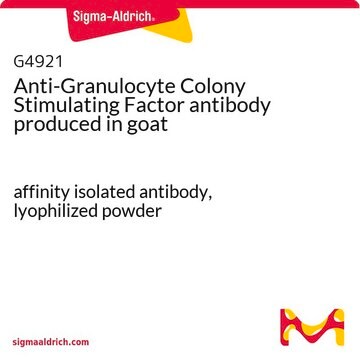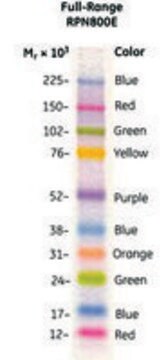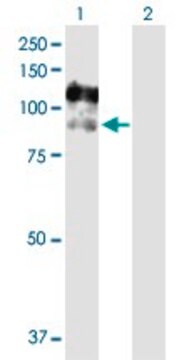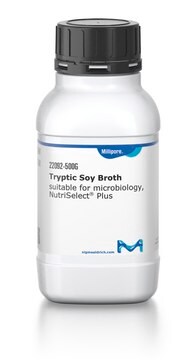G5421
Monoclonal Anti-Granulocyte Colony Stimulating Factor antibody produced in rat
clone 67604, purified immunoglobulin, lyophilized powder
Sinonimo/i:
Anti-Csf3, Anti-Csfg, Anti-G-CSF, Anti-MGI-IG
About This Item
Prodotti consigliati
Origine biologica
rat
Livello qualitativo
Coniugato
unconjugated
Forma dell’anticorpo
purified immunoglobulin
Tipo di anticorpo
primary antibodies
Clone
67604, monoclonal
Stato
lyophilized powder
Reattività contro le specie
mouse
tecniche
capture ELISA: 2-8 μg/mL
neutralization: suitable
western blot: 1-2 μg/mL
Isotipo
IgG1
N° accesso UniProt
Temperatura di conservazione
−20°C
Informazioni sul gene
mouse ... Csf3(12985)
Categorie correlate
Descrizione generale
Monoclonal anti-granulocyte colony stimulating factor recognizes mouse G-CSF. The antibody shows less than 0.06% cross-reactivity with recombinant human G-CSF.
Immunogeno
Applicazioni
Stato fisico
Esclusione di responsabilità
Non trovi il prodotto giusto?
Prova il nostro Motore di ricerca dei prodotti.
Prodotti correlati
Codice della classe di stoccaggio
13 - Non Combustible Solids
Classe di pericolosità dell'acqua (WGK)
WGK 1
Punto d’infiammabilità (°F)
Not applicable
Punto d’infiammabilità (°C)
Not applicable
Dispositivi di protezione individuale
Eyeshields, Gloves, type N95 (US)
Scegli una delle versioni più recenti:
Certificati d'analisi (COA)
Non trovi la versione di tuo interesse?
Se hai bisogno di una versione specifica, puoi cercare il certificato tramite il numero di lotto.
Possiedi già questo prodotto?
I documenti relativi ai prodotti acquistati recentemente sono disponibili nell’Archivio dei documenti.
Il team dei nostri ricercatori vanta grande esperienza in tutte le aree della ricerca quali Life Science, scienza dei materiali, sintesi chimica, cromatografia, discipline analitiche, ecc..
Contatta l'Assistenza Tecnica.








